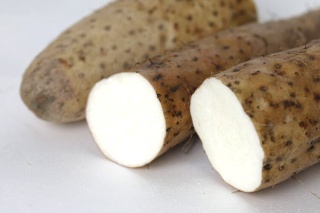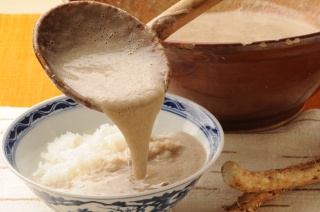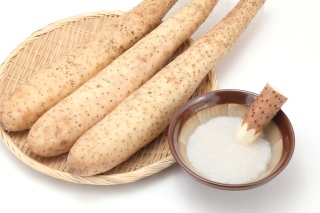Nagaimo
Extremely sticky and sweet
The nagaimo (Chinese yams) grown in Aomori make up 40% of domestic shares. In recent years, they have also been exported to the U.S. and Taiwan, and are being used as an ingredient in East Asian foods and for medicinal cooking.
Planting begins in May, and harvesting takes place twice a year. First is the autumn harvest between November and December, and then comes the spring harvest between March and April.
The most common variety is the Ganku Mijica, which is known for its short stem and plumpness, while also being soft and with little bitterness.
The skin is smooth and shiny, with few fibrous roots.
It is uniform in color, plump, thick and heavy.
When cut, the interior is white and watery.
Nagaimo should be wrapped in newspapers whole, and stored in cool, dry places. Once cut, the exposed area should be covered in clingfilm to prevent contact with the air, before being kept in a fridge. Nagaimo can be chopped or sliced, or ground into a tororo paste. In any form, it can be eaten raw. We also recommend you try pickling them, making them into tempura, frying them with butter and soy sauce, or adding them to a soup.
Seasonal Calendar
- Jan.
- Type2
- Feb.
- Type2
- Mar.
- Type2
- Apr.
- Type2
- May.
- Type2
- Jun.
- Type2
- Jul.
- Type2
- Aug.
- Type2
- Sep.
- Type2
- Oct.
- Type2
- Nov.
- Type2
- Dec.
- Type2
- Type1
- Type2
- Distribution period



